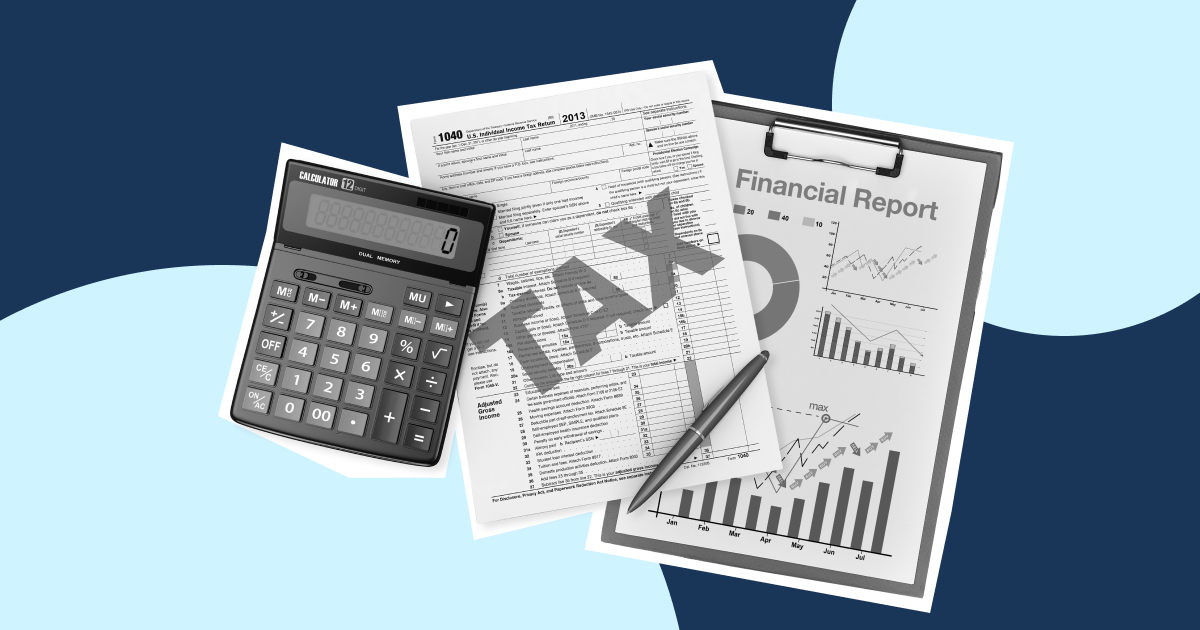Summary
Introducing InstanTech Corp. It's a big company with two parts: one where taxes are really high (let's call it Country A) and the other where taxes are lower (Country B).
In Country A, they make small electronic parts. Then, they put these pieces together in Country B to make cool gadgets.
When they send the pieces from Country A to Country B, they attach a price tag called the transfer price.
This helps them determine how much the parts are worth when moving.
By doing this cleverly, InstanTech Corp can ensure they don't end up paying more taxes than they have to.
Let’s dive deeper into what exactly is transfer pricing and how it works.
What Is Transfer Pricing?
It is the practice of establishing prices for goods, services, or intellectual property exchanged between different entities within a multinational enterprise (MNE). At its core, transfer pricing aims to ensure fairness and compliance with tax regulations by setting prices as if the transactions were between unrelated parties under similar circumstances.
How Does Transfer Pricing Work?
So, here's how transfer pricing works:
First, you've got to keep tabs on all transactions moving between your company's different parts—whether it's goods, services, or rights to intellectual property.
Then comes the tricky part: setting the prices for these transactions between related parties. You want to ensure these prices would hold up if your branches were separate companies doing business in an open market.
When setting these prices, you consider many factors—like what is being traded, the roles and risks each part of your company takes on, and the market conditions.
And here's why it matters so much: your prices affect how profits are divided among your branches, affecting your tax bill in each country.
Tax authorities are keeping a close eye on this stuff, so you've got to make sure your transfer pricing policies are on the level. That means documenting everything and being ready to show that your prices are fair and square.
So, in a nutshell, transfer pricing is all about ensuring your global business runs smoothly, stays legal, and pays its fair share of taxes in every country you operate in.

Understanding Transfer Pricing With An Example
Let’s understand this with an example.
Imagine you're the owner of a global coffee company. You source coffee beans from Colombia, costing you $100 for a batch.
Instead of selling the batch directly, you send it to your affiliate in a tax-friendly country, Singapore, for the same $100. This means no profits are made in Colombia, so no taxes are paid there.
Now, your Singapore affiliate sells the batch to another affiliate in the United States for $300. That's a $200 profit, all sitting comfortably in Singapore, where taxes are lower.
Finally, the batch ends up in a café in the United States, sold at the market price of $300, with no additional profit made there.
So, what's the outcome? You avoid paying taxes in Colombia and the United States, and that $200 profit? It stays untaxed, thanks to clever money moves through Singapore. This way, big multinational companies save their fair share of taxes and earn profits.
Transfer Pricing Guidelines In Singapore
Pricing your transactions with related parties, like your branches or head offices in Singapore, is all about fairness. That means ensuring your prices reflect what you'd pay or charge if you were dealing with an independent company. Regarding transfer pricing, the Inland Revenue Authority of Singapore (IRAS) provides clear transfer pricing guidelines to ensure fairness and transparency in intercompany transactions.
Regarding Transfer Pricing in Singapore, IRAS says profits should be taxed where real business action happens and value is created. To ensure this, they endorse the arm's length principle, meaning prices between related but independent parties should be similar to what unrelated companies would charge.
Regarding Transfer Pricing, IRAS guidelines suggest a 3-step approach for this:
- Look at comparable deals from unrelated companies to see how they price similar transactions.
- Figure out the best pricing method and which party to test.
- Make sure your pricing matches what unrelated companies would charge.
The Three-Step Approach To The Arm’s Length Principle
Step 1: Conducting a Comparability Analysis
To ensure compliance with transfer pricing regulations, it's crucial for you, as a business owner, to conduct a thorough comparability analysis. This involves identifying transactions or situations undertaken by unrelated entities that closely resemble those involving your related parties.
Focus on these four key areas:
- Contractual Terms: Review the terms of your transactions, including pricing, payment terms, and any other contractual obligations.
- Characteristics of Goods, Services, or Intangible Properties: Compare the key features of your transactions' products, services, or intangible assets.
- Functional Analysis: Evaluate the functions performed, risks assumed, and assets each party utilises in your transactions.
- Commercial and Economic Circumstances: Consider the broader market conditions, industry trends, and economic factors influencing your transactions.

Additionally, it may be beneficial for you to consider:
- Losses: Assess whether any losses incurred by unrelated entities are relevant to your analysis.
- Multiple-Year Data: Utilize data from multiple years to capture fluctuations and trends in pricing and market conditions.
- Separate Transaction Assessment: Evaluate your transactions individually to ensure accuracy and relevance.
- Selection of Comparables: Choose appropriate comparables from a range of potential options to enhance the accuracy of your analysis.
Step 2: Determining the Most Appropriate Transfer Pricing Method
Once your comparability analysis is complete, the next step is to select the most suitable transfer pricing method and identify the tested party.
The Different Transfer Pricing Methods
Here are some standard methods of transfer pricing:
- CUP Method using Internal CUP: This method looks at how much your company charges for something when it sells the product or service to another part of the company. For example, if your branch in Singapore sells computer parts to another branch in a different country, you can check how much similar transactions within your company cost.
- CUP Method using External CUP: This method compares how much your company charges for a product or service with what other companies are charging for similar things on the open market. So, if you're selling software licenses to another branch in another country, you can see how much other companies charge for similar licenses.
- Resale Price Method: With this method, you base the transfer price on the resale price of the product or service by the buyer, less a suitable profit margin. For instance, if your Singapore company sells smartphones to your subsidiary in another country, you can base the transfer price on the price at which your subsidiary sells the smartphones to customers minus an appropriate profit margin.
- Cost Plus Method: This method involves adding a markup to the cost incurred by the seller to determine the transfer price. For example, if your Singapore company manufactures furniture and sells it to your subsidiary in another country, you can add a markup to cover additional costs and profit margin.
- Transactional Profit Split Method (Residual Analysis Approach): With this method, you allocate the combined profits from a controlled transaction between related parties based on an analysis of the functions performed, risks assumed, and assets utilised by each party. For instance, if your Singapore company and your subsidiary in another country jointly develop and market a product, you allocate the profits based on the contribution of each party.
- Transactional Net Margin Method: Here, you compare the net profit margin the seller earns from a controlled transaction with the net profit margins of comparable uncontrolled transactions or entities. For example, suppose your Singapore company provides IT services to your subsidiary in another country. In that case, you compare the net profit margin earned from this transaction with similar transactions conducted by unrelated companies
.gif)
Each transfer pricing method has its strengths and weaknesses, and the most appropriate method depends on factors such as the nature of the transaction, availability of comparable data, and regulatory requirements.
Step 3: Assessing Compliance with the Arm's Length Principle
After selecting a transfer pricing method, it's essential to apply it to your related-party transactions and ensure alignment with the arm's length principle. This involves supporting your chosen transfer prices with relevant data and documentation, which you can present to tax authorities during audits or inquiries. By following these steps, you can mitigate transfer pricing risks and demonstrate compliance with regulatory requirements.
Transfer Pricing Documentation
You need to keep up-to-date records of your transfer pricing. This means you should have documents that show your related party transactions are fair. These documents should use the most recent information and data to explain how you decided on your transfer prices.
Starting from the Year of Assessment 2019, you must prepare transfer pricing documentation under Section 34F of the Income Tax Act 1947 if your gross revenue exceeds S$10 million or you were previously required to prepare such documentation. However, even if you're not mandated, preparing documentation to manage transfer pricing risks effectively may be wise.
Your transfer pricing documentation should include an overview of your group's businesses relevant to operations in Singapore and detailed information on your business and related party transactions. Remember to adhere to specified timing and content regulations and retain your documentation for at least five years.
Failure to comply with transfer pricing documentation requirements can result in fines up to S$10,000 for offences such as failing to prepare, submit, or retain accurate documentation. So, it's crucial to ensure you meet these requirements to avoid penalties and effectively manage your transfer pricing risks.
Exemptions from preparing TPD are applicable under the following circumstances:
- If the taxpayer's gross revenue does not exceed S$10 million (US$7.4 million).
- Related party loans with an indicative margin applied.
- Routine support services with a five per cent cost markup applied.
- Related party domestic loans.
- Related party transactions are covered by an Advance Pricing Arrangement (APA).
The Advantages Of Transfer Pricing
So, let's talk about why transfer pricing is a good thing:
- Savings on Costs: When you set transfer prices, they're usually the same as or lower than market prices. This means the parts or services you buy from within your company can be cheaper, saving you money.
- Clearer Transactions: Transfer pricing makes things clearer when doing business between different parts of your company. It's like having a spotlight on every deal, so there's no confusion.
- Smooth Supply: With transfer pricing, you ensure the needed stuff is always available. This helps avoid any hiccups in your supply chain, keeping things running smoothly.
So, whether you're saving money, keeping things clear, or ensuring your supply chain stays on track, transfer pricing has covered you!
The Disadvantages Of Transfer Pricing
As a business owner, it's essential to consider the potential drawbacks of transfer pricing:
- Revenue Impact: When setting transfer prices, they often align with or are lower than market prices. This may result in reduced revenue for the selling entity.
- Complexity: Transfer pricing can pose challenges due to its intricate nature. Unlike market prices, which reflect supply and demand dynamics, transfer prices may be influenced by various internal factors within the organisation.
- Potential for Internal Conflict: If transfer prices significantly deviate from market prices, it may lead to internal discord among different business units. Such discrepancies could foster feelings of dissatisfaction or inequity.
Keeping these considerations in mind can help ensure a balanced approach to managing transfer pricing within your organisation.
How Does Aspire Help In Tracking Your Profits?
Aspire offers a professional solution to keeping a vigilant eye on your profits. It simplifies the process by allowing you to track revenue, monitor expenses, automate payables and calculate profit margins effortlessly. You can set financial goals and receive alerts if your performance deviates from expectations and set budgets. With seamless integration with accounting software, Aspire ensures you always have up-to-date data to analyse profit trends effectively. It's the ideal tool for businesses of all sizes to stay proactive in managing profits and driving sustainable growth.
Don't hesitate any longer. Take action now and open a business account with Aspire immediately!










%201.webp)


.webp)